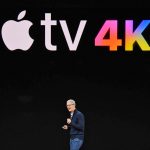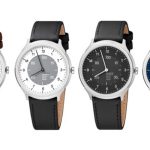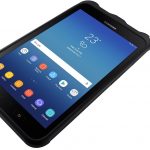For Many, The PC, Smartphone, And Tablet Waves Hit All At Once
It’s easy to assume that since personal computers have been around for 40 years, and have been available and affordable for nearly two decades, everyone in developed markets already owns and uses one. In reality, the market of people who own PCs purely for personal use isn’t that old.
Actually, 2008 was the first year annual worldwide shipments of consumer PCs overtook corporate PC sales volumes. Consumer PC shipments then continued to outpace corporate sales until 2013 when the two numbers became relatively even.
The research we’ve done at my company, Creative Strategies, shows that 33% of U.S. consumers purchased their first PC between 2009-2015, and 37% are now using only their first or second (personally owned) PC.
And, if you recall, it was during this same time frame that smartphones had their meteoric rise. Very soon after smartphones hit, tablets made the scene. Looking back, within the span of four years, PCs, smartphones, and tablets went mass market at about the exact same time.
This means a full third of PC owners bought their machines during the heydays of both the smartphone and the tablet, so they probably never saw the PC as the center of their computing universe. They probably never had the chance to establish a deep relationship with their PC—not as deep, anyway, as those of us who have owned them for decades.
That confluence of tech adoption curves is also a primary reason the PC growth cycle was cut short and never reached its full potential. There was a time that I and many others believed every person would own a PC. That belief is coming true, except that that PC is coming in the shape of a smartphone—not just in the shape of a notebook or desktop as we once thought.
That dynamic shows up clearly in our research. Fully 70% of consumers in our research panel said their smartphone is their most important personal (not work) device. Or that 43% said they use their PC or Mac mainly for work tasks and their smartphone for most other tasks. Or that 45% said they spend more time at home (not work) using their smartphone than their PC and Mac. And, perhaps most significantly, that 64% of consumers say they find themselves spending more time using their smartphone the longer they have owned it.
Typically, technology rolls out in waves. Waves generally come in sets of three, with periodic breaks in between each. Sticking with the surfing analogy, tech companies can usually ride these waves, and have enough time in between to catch more than one.
But for a high number of consumers, PCs, phones, and tablets all came at once in one giant wave, with each device often living alongside and interacting with the others in important ways. And those who missed that big wave were left treading water on a flat sea.
Obviously a huge part of the big wave came from smartphones. While consumer PC shipments ranged between 150 million and 200 million per year during the 2008-2013 time frame, with total industry PC shipments at around 300 million, smartphone shipments quickly rose to one billion and beyond annually. There has simply been no other product in consumer tech with the size and scale of the smartphone market. That will not change anytime soon.
So the companies that rode the mobile part of the tech tsunami were the real winners, and they are named “Apple” and “Google.” Google’s Android partners like Samsung and Huawei can be included here too. Apple and Google also rode the tablet part of the wave, as the combined two product categories dwarfed the consumer PC portion of the tsunami.
The consumer tech tsunami has affected the fortunes of many companies, and has propelled many new companies from obscurity to riches. However, tech companies might learn more from the calm waters that precede and follow the waves. That’s where we are at the moment, as everyone selling hardware to the consumer market is seeing dramatically slowing sales volumes in nearly every market. PC growth will be negative to the tune of 8% to 10% in 2016. Tablet market growth will be off 10% to 15%. Smartphones will grow only about 3% to 6% globally this year.
The big wave brought new technology en masse to consumers globally, but now that the cycle is over, consumers tend to be content with what they have, and buy less frequently.
In the developed world, consumers are using their current devices for longer periods before replacing them. And when they do replace them, it’s with the same type of device with a few new features. Those companies that caught and rode the big wave of the consumer tech tsunami now have to manage the calm waters, which can often bring more turmoil and carnage than the wave itself. It’s during this time when companies must prepare themselves to avoid missing the next big wave.
Whether the next wave is virtual/augmented reality, wearable tech, artificial intelligence, or something else, I’m not sure we will see anything like the consumer tech tsunami for a very long time.
Ben Bajarin leads the behavioral analysis and research center at the analyst and consulting group Creative Strategies.
Fast Company , Read Full Story
(20)













